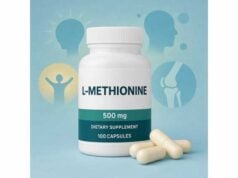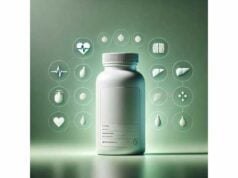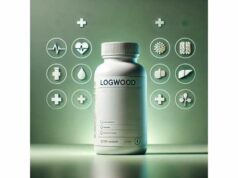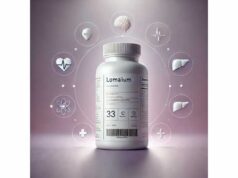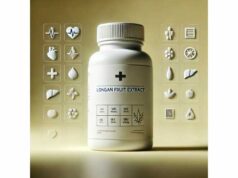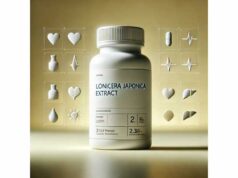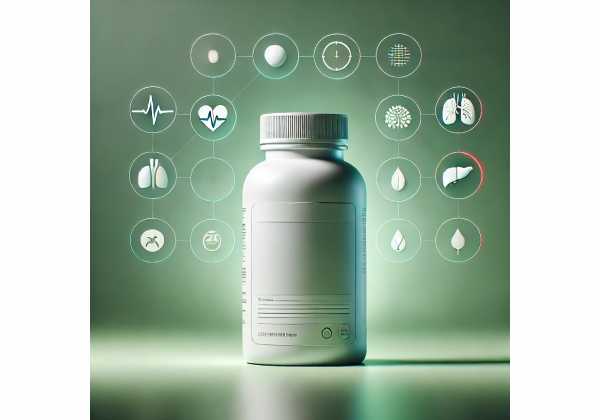
Lugol’s iodine is a simple mixture of elemental iodine (I₂) and potassium iodide (KI) dissolved in water. Created in 1829 by French physician J. G. A. Lugol, it remains a pharmacy staple thanks to iodine’s unique chemistry: in the body, iodide fuels thyroid hormone production; in medicine, concentrated iodine temporarily tames an overactive thyroid; in public health, iodide protects the thyroid during nuclear incidents; and on the skin, iodine is a time-tested antiseptic. Yet the same potency that makes Lugol’s useful also demands respect. A single drop of the 5% solution delivers milligram-level iodine—dozens of times the daily requirement—so dose, timing, and indication all matter. This guide translates the science and the rules into clear, practical steps: what Lugol’s iodine is (and is not), where it helps, how to measure drops and interpret labels, common pitfalls, who should avoid it, and how clinicians use it in specific scenarios such as preoperative care for Graves’ disease or emergency thyroid blocking. Use it to make informed, safe choices in partnership with your healthcare professional.
Quick Overview
- One drop of 5% Lugol’s typically supplies about 6.25 mg total iodine (iodine plus iodide); 2% provides about 2.5 mg.
- The adult daily iodine requirement is 150 mcg; routine milligram dosing is not appropriate without medical supervision.
- Short courses help prepare some patients with hyperthyroidism for surgery; emergency thyroid blocking uses potassium iodide per public guidance.
- Avoid use in pregnancy, during attempts to conceive, in infants, and in anyone with known thyroid disease unless directed by a clinician.
Table of Contents
- What is Lugol’s iodine?
- What benefits are realistic and how do they work?
- How to use it and how much is safe?
- Practical scenarios and examples
- Common mistakes and troubleshooting
- Safety, side effects, and who should avoid it
- Evidence snapshot: what the research and guidelines say
What is Lugol’s iodine?
Definition and composition. Lugol’s iodine is an aqueous solution of iodine (I₂) and potassium iodide (KI). The two common pharmacy strengths are:
- 5% Lugol’s (a.k.a. “Strong Iodine Solution”): 5% w/v iodine (50 mg/mL) plus 10% w/v potassium iodide (100 mg/mL).
- 2% Lugol’s: 2% w/v iodine (20 mg/mL) plus 4% w/v potassium iodide (40 mg/mL).
Potassium iodide increases iodine’s solubility by forming triiodide in water. There is no alcohol in classic Lugol’s.
Drops and milligrams. Most pharmacy “metric” drops are approximated at 0.05 mL per drop. On that basis:
- 5% Lugol’s: ~2.5 mg iodine (I₂) + ~3.75 mg iodide (from KI) ≈ 6.25 mg total iodine per drop.
- 2% Lugol’s: ~1.0 mg iodine + ~1.5 mg iodide ≈ 2.5 mg total iodine per drop.
Products vary in droppers and viscosity; reliable labels disclose concentration in mg/mL. If a label lists only “%,” use the approximations above and dose conservatively.
Where it’s used.
- Thyroid care (medical supervision required): Short preoperative courses in Graves’ disease to reduce thyroid hormone release and thyroid blood flow; short-term adjuncts in thyroid storm; iodine repletion when deficiency is documented and other forms are unsuitable.
- Emergency thyroid blocking: Public-health protocols use potassium iodide (KI) tablets or liquid—not household Lugol’s bottles—because dosing must be exact and age-specific.
- Topical antisepsis: Diluted iodine solutions for skin and mucosa in clinical settings.
- Laboratory and clinical procedures: Staining (e.g., Gram stain), Schiller’s test in gynecology, and endoscopic chromoendoscopy protocols (specialist use).
What it is not. Lugol’s is not a daily dietary supplement. The body needs iodine in micrograms, not milligrams. For routine intake, iodized salt and standard multivitamins provide appropriate amounts.
What benefits are realistic and how do they work?
1) Supports thyroid hormone synthesis—at physiologic doses.
Iodide is a raw material for thyroxine (T₄) and triiodothyronine (T₃). When dietary intake meets needs (typically 150 mcg/day for non-pregnant adults), the thyroid efficiently organifies iodide to maintain stable hormone levels. In deficiency, increasing iodide toward the recommended intake restores normal hormone production and prevents goiter. This role is fulfilled by microgram dosing from food, iodized salt, or standard supplements—not by routine Lugol’s drops.
2) Temporarily suppresses thyroid hormone release at high doses.
Paradoxically, milligram doses of iodine acutely inhibit thyroid hormone synthesis and release (a protective autoregulatory response). Clinicians use this effect briefly in Graves’ disease before thyroid surgery and as part of thyroid storm management. The benefit is a rapid but short-lived reduction in hormone release and thyroid gland vascularity, making surgery safer. Because this effect “escapes” after several days, high-dose iodine is a time-limited tool, not a stand-alone long-term therapy.
3) Thyroid blocking in nuclear incidents (public-health setting).
If radioactive iodine is released, saturating the thyroid with stable iodide prevents uptake of the radioactive form. Public-health agencies specify exact doses and timing (age-based) using potassium iodide (KI) tablets or official liquid formulations. This lowers the risk of radiation-induced thyroid cancer, especially in infants, children, and pregnant individuals when taken at the right time. Household Lugol’s bottles are not recommended for self-dosing during emergencies because drop size and concentration vary.
4) Antiseptic action on skin.
Iodine kills a broad spectrum of microbes. Clinicians use labeled products (including “Strong Iodine Solution USP”) on intact skin or mucosa, often diluted. Staining, irritation, and rare allergic reactions can occur; povidone-iodine or chlorhexidine may be preferred for many modern protocols.
5) Clarifying myths.
- “Patch test” for iodine status: The fading of a skin stain does not reflect body iodine levels; it reflects evaporation, reduction, and skin absorption kinetics.
- “More is better” for fatigue or weight: Excess iodine can worsen thyroid function or trigger hyperthyroidism in predisposed people. Benefits come from adequacy, not chronic excess.
Bottom line. Lugol’s iodine has clear, clinically defined roles. Outside those roles, routine daily drops carry more risk than reward.
How to use it and how much is safe?
Start with your actual need. The right form and dose depend on why you’re considering iodine.
A) Meeting daily dietary needs (most people).
- Aim for 150 mcg/day (adults), 220 mcg (pregnancy), 290 mcg (lactation).
- Prefer iodized salt and, if needed, a standard multivitamin or prenatal that lists iodine in mcg.
- Avoid using Lugol’s drops for daily intake: a single drop of 2% (~2,500 mcg) or 5% (~6,250 mcg) greatly exceeds daily needs and can surpass the Tolerable Upper Intake Level of 1,100 mcg/day for adults.
B) Preoperative Graves’ disease or thyroid storm (medical use only).
- Endocrinology and surgical teams may prescribe short courses of iodine (e.g., Lugol’s or SSKI) for about 7–10 days before thyroidectomy or as an adjunct in thyroid storm.
- Typical regimens use multiple daily drops of 5% Lugol’s measured precisely, alongside antithyroid drugs and beta-blockers. Do not attempt this without a prescriber; timing relative to antithyroid medication matters.
C) Radiation emergencies (public guidance only).
- Follow official instructions if directed to take potassium iodide (KI). Doses are age-based, with adults typically receiving 130 mg KI (not iodine) at specific times.
- KI is not a general radiation antidote; it protects only the thyroid and only from radioactive iodine. Evacuation, sheltering, and decontamination remain primary measures.
- Don’t substitute household Lugol’s; use authorized KI products with clear age-appropriate dosing.
D) Topical antisepsis (clinical products).
- Use labeled strong iodine solution externally as directed. For home first aid, modern povidone-iodine or chlorhexidine products are often easier to use and less staining.
Measuring drops safely.
- Verify the bottle’s strength (% or mg/mL).
- If your clinician specifies mg of iodine, convert using the approximations above. When in doubt, bring the bottle to your appointment to confirm equivalence.
- Keep dosing time-limited (days), unless your clinician provides a long-term plan with labs.
When to recheck labs.
- After any short course of high-dose iodine, clinicians often recheck TSH, free T₄, and sometimes free T₃ within 2–6 weeks, sooner if symptoms change.
Practical scenarios and examples
Scenario 1: You just want to “support thyroid health.”
Choose food-level iodine: cook with iodized salt, include seafood or dairy as tolerated, and consider a 150 mcg iodine multivitamin if your diet is low in iodine. Skip routine Lugol’s drops; they’re too concentrated for daily use.
Scenario 2: Your clinician confirms iodine deficiency.
If a deficiency is documented, most clinicians correct it with microgram-level supplements (e.g., potassium iodide tablets) and dietary changes. Rarely, a measured Lugol’s regimen may be used short term under supervision. Expect follow-up labs to titrate to the minimal effective dose.
Scenario 3: Preoperative Graves’ disease.
Your endocrinologist or surgeon may prescribe antithyroid medication plus a short course of iodine before surgery to reduce thyroid hormone release and gland blood flow. You’ll get exact instructions (e.g., number of drops twice or three times daily for 7–10 days) and a plan for when to stop before surgery day. Self-adjusting the dose can blunt the benefit or provoke side effects.
Scenario 4: Public alert after a nuclear incident.
You hear instructions from authorities to take KI. Use the age-specific dose from official distribution (tablets or liquid) and take it at the time specified. Do not grab a Lugol’s bottle at home and guess; over- or under-dosing undermines protection and can cause harm.
Scenario 5: First-aid antisepsis.
If your clinic provides strong iodine solution, apply externally as directed. For general home care, povidone-iodine products are widely available and easier on skin and clothing; follow label instructions.
Scenario 6: Internet claims about “iodine painting” or patch tests.
Painting Lugol’s on skin to “test status” is unreliable. The stain fades because iodine evaporates, reduces to iodide, and absorbs into the stratum corneum—none of which quantify body stores. If you’re concerned about iodine, ask for dietary review and appropriate labs.
Common mistakes and troubleshooting
Mistake 1: Using Lugol’s to meet daily iodine needs.
A single drop of 5% Lugol’s (~6,250 mcg) is >40× the adult daily requirement and exceeds the UL. Long-term excess raises the risk of hypothyroidism (failure to escape from the gland’s protective brake) or iodine-induced hyperthyroidism in susceptible people.
Mistake 2: Self-treating thyroid symptoms.
Fatigue, weight changes, palpitations, anxiety, and hair loss have many causes. Adding iodine without labs can mask diagnoses or destabilize thyroid function. Start with evaluation, not supplements.
Mistake 3: Confusing products and units.
Potassium iodide (KI) for radiation emergencies is dosed in milligrams of KI; dietary supplements list micrograms of iodine; Lugol’s labels may show percent or mg/mL. Converting incorrectly can overdose or underdose you.
Mistake 4: Prolonging high-dose courses.
Iodine’s acute suppressive effect is temporary. Extending high doses beyond the prescribed window can flip suppression into dysfunction. If your course is over, stop unless your clinician says otherwise.
Mistake 5: Applying undiluted solution to sensitive tissues.
Concentrated iodine can irritate mucosa and stain skin. Follow label directions for dilution and contact time, and avoid eyes. If burning or blistering occurs, rinse with plenty of water and seek care.
Troubleshooting quick answers
- Metallic taste, mouth sores, or excessive salivation: Pause use and contact your clinician—these can be signs of iodism.
- New palpitations, heat intolerance, tremor, or insomnia: Stop iodine and seek evaluation for thyrotoxicosis.
- Fatigue, cold intolerance, constipation, or weight gain after iodine exposure: Ask about TSH and free T₄ testing for possible hypothyroidism.
- Skin irritation after topical use: Rinse thoroughly; consider alternative antiseptics in the future.
Safety, side effects, and who should avoid it
Common tolerability issues (dose-related):
- Gastrointestinal: nausea, epigastric discomfort.
- Taste and mucosal: metallic taste, mouth/throat soreness, increased salivation.
- Skin: irritation or dermatitis with topical use; brown staining.
- Sialadenitis (salivary gland swelling) can occur with higher doses.
Thyroid effects:
- Hypothyroidism (Wolff–Chaikoff effect without escape), especially in infants, the elderly, and those with autoimmune thyroiditis or prior thyroid treatment.
- Iodine-induced hyperthyroidism (Jod-Basedow) in people with nodular goiter, latent Graves’ disease, or long-standing iodine deficiency who suddenly receive excess iodine.
- Transient lab changes can occur even in healthy people after large iodine exposures; most normalize after stopping.
Medication and condition cautions:
- Antithyroid drugs (methimazole, propylthiouracil): Iodine may be added by clinicians in specific sequences; don’t self-combine.
- Lithium: raises risk of hypothyroidism; avoid extra iodine unless supervised.
- Amiodarone and iodinated contrast: already contain large iodine loads; additional iodine can compound risk.
- Dermatology/ENT procedures: tell your clinician about iodine sensitivity before topical use.
Populations who should avoid self-use:
- Pregnancy and breastfeeding: Excess iodine can cause fetal or neonatal hypothyroidism and goiter. Use only if prescribed, typically at microgram doses.
- Infants and children: Highly sensitive to iodine; follow pediatric guidance only.
- Known thyroid disease or nodular goiter: High risk for dysfunction from excess iodine.
- Iodine or iodide allergy: True allergy is uncommon but possible; prior severe reactions to iodine antiseptics warrant caution and consultation.
Quality and storage:
- Choose products with clear strength and lot testing.
- Store tightly closed, away from light and heat; iodine vapors can escape over time, reducing potency.
When to seek care immediately:
- Severe abdominal pain, persistent vomiting, or bloody diarrhea after ingestion.
- Confusion, fever, or signs of thyroid storm (a medical emergency).
- Swelling of face or throat, wheeze, or hives (possible hypersensitivity).
Evidence snapshot: what the research and guidelines say
Daily needs and upper limits. Authoritative nutrient references place adult iodine requirements at 150 mcg/day with a Tolerable Upper Intake Level of 1,100 mcg/day for most adults, higher needs during pregnancy and lactation. These values inform the recommendation to meet iodine needs with food, iodized salt, or microgram-level supplements—not routine Lugol’s drops.
Clinical uses in hyperthyroidism. Specialty guidelines for thyrotoxicosis describe short-term iodine as part of preoperative preparation for Graves’ disease and as an adjunct during thyroid storm. The goals are to inhibit hormone release promptly and decrease thyroid gland vascularity before surgery, thereby reducing operative risk. Because the suppressive effect is temporary, clinicians limit duration and coordinate with antithyroid drugs.
Radiation emergencies. Public-health guidance emphasizes potassium iodide (KI) for iodine thyroid blocking (ITB), with age-specific doses and precise timing relative to exposure. KI protects only against radioactive iodine and is used with evacuation, sheltering, and other measures; it is not a general radiation antidote. Use of household Lugol’s is not advised because concentration and drop size vary, risking mis-dosing.
Topical indications. Labeled Strong Iodine Solution USP contains 50 mg/mL iodine and 100 mg/mL potassium iodide and serves as a topical antiseptic under professional direction. For routine first aid, widely available povidone-iodine often offers better tolerability and handling.
Iodine excess risks. Reviews and case reports document hypothyroidism from failure to escape the Wolff–Chaikoff effect and hyperthyroidism (Jod-Basedow) after excess iodine exposure, particularly in individuals with nodular goiter, latent Graves’ disease, or prior thyroid dysfunction. These risks underscore why milligram-level iodine should be time-limited and supervised.
Takeaway. Lugol’s iodine is powerful, useful, and narrow-purpose. Meet everyday iodine needs with food and microgram-level supplements. Reserve high-dose iodine for specific, time-limited medical or public-health indications, and follow professional guidance closely.
References
- Iodine – Health Professional Fact Sheet (2024)
- 2016 American Thyroid Association Guidelines for Diagnosis and Management of Hyperthyroidism and Other Causes of Thyrotoxicosis (2016)
- Potassium Iodide (KI) | Radiation Emergencies (2024)
- Iodine thyroid blocking: Guidelines for use in planning and responding to radiological and nuclear emergencies (2017)
- LUGOLS STRONG IODINE- iodine and potassium iodide solution (2021)
Medical Disclaimer
This guide is educational and does not replace professional medical advice, diagnosis, or treatment. Do not self-treat thyroid symptoms with Lugol’s iodine. If you are pregnant, trying to conceive, breastfeeding, have thyroid disease, take antithyroid medication, lithium, amiodarone, or recently received iodinated contrast, speak with a qualified healthcare professional before using any iodine product. In radiation emergencies, follow official instructions and use authorized potassium iodide (KI) products. Seek urgent care for severe reactions or signs of thyroid storm.
If you found this article helpful, please consider sharing it on Facebook, X (formerly Twitter), or your preferred platform, and follow us for future evidence-based guides. Your support helps us continue producing high-quality content.

